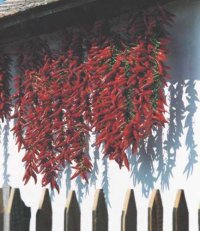 |
 |
 |
 |
 |
| magyar | English | deutsch | italiano | espańol |
Hungarian Specialities
Budapest City Guide
Hungary Tourist Guide:
Lake Balaton
Hungarian Specialities
The National Symbols of Hungary
The Hungarian Forint
Tipping in Hungary
Hitchhiking in Hungary
Gifts from Hungary
Formula 1 in Hungary
Hungarian Dishes
Hungarian Travel Dictionary
Railway Transport in Hungary
Postal Service in Hungary
Fishing by Foreigners
| Hotel Booking |
| Hungarian cities |
| Programs |
| Car Rental |
| Weather |
 The sentence beginning like "If you happen to be there you have to try..." must be familiar to most travellers. No matter which country we are going to visit, we cannot leave without trying at least one of the local specialities. Many of such gastronomical products of Hungary are unique and popular all over the world. Here are some that are most liked and well-known of these:
The sentence beginning like "If you happen to be there you have to try..." must be familiar to most travellers. No matter which country we are going to visit, we cannot leave without trying at least one of the local specialities. Many of such gastronomical products of Hungary are unique and popular all over the world. Here are some that are most liked and well-known of these:"Túró Rudi" / chocolate coated cottage cheese snack: Túró Rudi is a chocolate coated sweetish-sourish cottage cheese bar, which is a much liked self-made, milky dessert of Hungary. Its story begins in 1968, when its production starts and it gets its name from the idea of an academic, Sándor Klein. Originally "Túró Rudi" is a Soviet sweet, which arrived in Hungary during a study tour between countries that were members of the "Comecon" (Council for Mutual Economic Assistance). Even though many sorts of this sweet have appeared and different companies started to manufacture it, the original and also most popular type remained the "Red dotted" one, put into circulation under the name "Dots" in Romania and Slovakia.
"Lángos" / fried dough: Another popular one of the traditional Hungarian dishes is "lángos" the origin of which dates back to old times. Actually "lángos" is the "pre-product" of bread. Before the bread was baked they tore a small part out of it, formed a flan and put it into the oven among live coal. Soon "lángos" or "langalló" was ready in the blazing flames and then after spreading it with sour cream it was consumed by the family. Being short of an oven townsmen often fried dough in fat, later in oil making it become a permanent product of procession and town fairs. Nowadays we can get it on the beaches or in snack bars on the street, but it is often part of the lunch in households as well. The traditional and most popular kind is the one with sour cream and cheese on it.
Salami: Salami is also much liked, above all among foreign tourists visiting Hungary. The technology of the manufacturing of the product, which was discovered in Italy, reached Hungary in the middle of the 19th century. The production process is already known throughout the world. Hungarian "salami-culture" came up with two world-famous brands, one of them is "Pick", born in 1869, the other one is "Herz", made on the basis of a different recipe but with similar technology. The "Pick" type of Hungarian salamis have become world famous due to its unique basic material, spicing and precise technology. This modern, computer - controlled ripening technology resembles the traditional one (filling-preservation-ripening) and that is what makes "Pick" a traditional and modern product at the same time. Its success is preserved even in the time of fast changing food customs.
Paprika: The ground Hungarian paprika serves as an establisher of the character and piquant taste of numerous Hungarian dishes. The earlier name of paprika - "Turkish pepper" - indicates that this plant, stemming originally from Central America, became known to Hungarians through Turkish intervention. In the middle of the 19th century Szeged became the most important centre of the Hungarian paprika yield. During the grinding process the extent of sharpness was controlled by the portioning of seed and venation quantities. In the 1920s with its sweet paprika Kalocsa became a rival to Szeged. Paprika is taste, flavour, delight and a useful gift as well. Besides ground paprika green pepper also enjoys great popularity, the biggest agricultural area of it is the southern part of the Great Plain (the centre of it is Szentes), which is rich in sunshine.
Pálinka: Pálinka is an alcoholic drink, which is made of different fruits through the processes of fermentation and distillation. The most frequently used basic materials are plums, pears, cherries, and apricots. The apricot pálinka of Kecskemét, which is the most famous Hungarian type, is made of this latter one. Other famous types are the plum pálinka of Szatmár and the "Vilmos" made of pears; they are popular in Hungary and abroad as well. The sources referring to the origin of "pálinka" come from the time of the Anjou King, Károly Róbert; his wife was cured with the "water of life" (aqua vitae). In the times of King Matthias the distillates made of fruits were already distinguished from those made of grains. The word "pálinka" itself starts to spread in the Hungarian language in the 17th century and at this point it is used for distilles made of grains only. It was a custom, particularly among the village people, that in the morning they started the day with a glass of this special Hungarian drink. In the1900s it was often called the coffe of the poor.
E-mail:

Fax: +36 1 900 9079
All rights reserved.